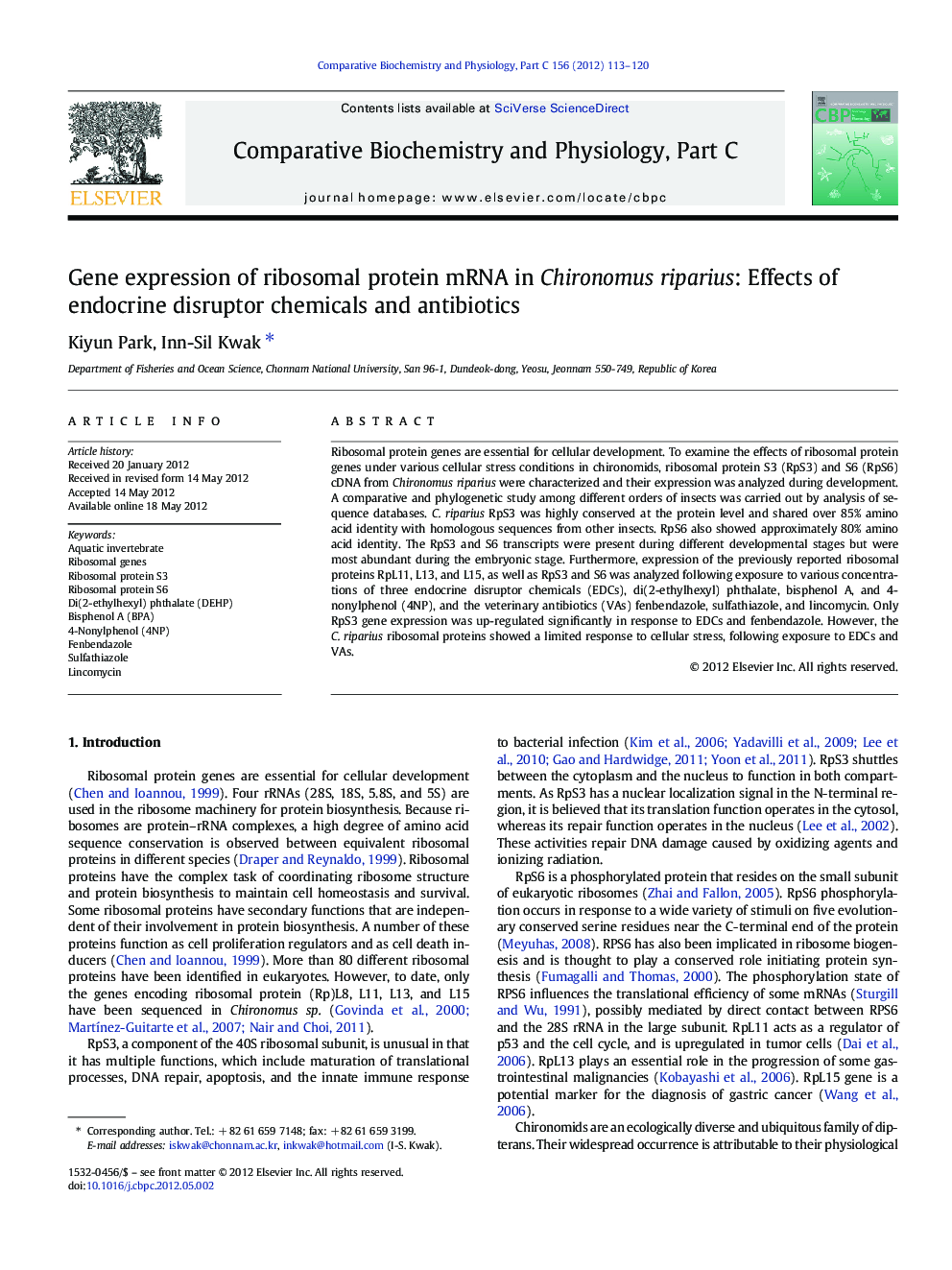| Article ID | Journal | Published Year | Pages | File Type |
|---|---|---|---|---|
| 1977434 | Comparative Biochemistry and Physiology Part C: Toxicology & Pharmacology | 2012 | 8 Pages |
Ribosomal protein genes are essential for cellular development. To examine the effects of ribosomal protein genes under various cellular stress conditions in chironomids, ribosomal protein S3 (RpS3) and S6 (RpS6) cDNA from Chironomus riparius were characterized and their expression was analyzed during development. A comparative and phylogenetic study among different orders of insects was carried out by analysis of sequence databases. C. riparius RpS3 was highly conserved at the protein level and shared over 85% amino acid identity with homologous sequences from other insects. RpS6 also showed approximately 80% amino acid identity. The RpS3 and S6 transcripts were present during different developmental stages but were most abundant during the embryonic stage. Furthermore, expression of the previously reported ribosomal proteins RpL11, L13, and L15, as well as RpS3 and S6 was analyzed following exposure to various concentrations of three endocrine disruptor chemicals (EDCs), di(2-ethylhexyl) phthalate, bisphenol A, and 4-nonylphenol (4NP), and the veterinary antibiotics (VAs) fenbendazole, sulfathiazole, and lincomycin. Only RpS3 gene expression was up-regulated significantly in response to EDCs and fenbendazole. However, the C. riparius ribosomal proteins showed a limited response to cellular stress, following exposure to EDCs and VAs.
